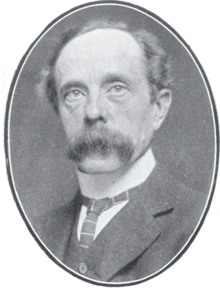Charles Edwin Benham (1860-1929)
December 18, 2013
 Charles
Edwin Benham (1860-1929)
was the Editor of the [Tory] newspaper the Essex County
Standard, a lay
scientist inventor of the Benham’s
top (relayed through the
1894 issue of Nature), and
the harmonograph, Benham
was also a scholar, a watercolour artist and a prodigious author.
Charles
Edwin Benham (1860-1929)
was the Editor of the [Tory] newspaper the Essex County
Standard, a lay
scientist inventor of the Benham’s
top (relayed through the
1894 issue of Nature), and
the harmonograph, Benham
was also a scholar, a watercolour artist and a prodigious author.
Charles Edward Benham was a correspondent of James John Garth Wilkinson, and he is listed in James John Garth Wilkinson’s address book at The Essex Standard, High Street, Colchester (Swedenborg Archive Address Book of James John Garth Wilkinson ‘Where is it’ dated 1.10.1892).
From http://en.wikipedia.org/wiki/Charles_Benham Charles Edwin Benham (1860-1929) ‘… was a journalist, editing for many years the Essex County Standard, a published author of works such as Essex Ballads and an amateur scientist-cum-inventor, which led him to create Benham’s top, which was named after him.
Born on 15 April 1860 into a family of newspaper proprietors, Benham was educated at Colchester Royal Grammar School but did not attend university. He later returned to the school to become President of the Old Colcestrian Society for old boys of the school. Living in Colchester for all but a handful of years of his life spent with Mebrose printers in Derby - and, in turn, writing about it in many of his books - he helped edit the family-controlled paper the Essex County Standard jointly with his brother William Gurney Benham (1859-1944) from 1892 until his death in 1929, which was described as “sudden and unexpected”, from angina pectoris whilst in his editorial office for the newspaper. He left a widow.
In the spare time that this provided, Benham was a keen amateur scientist and contributor to the journal Nature. His obituary in Nature noted that Benham was “a representative of the type of scientific amateur of which British science has reason to be proud… by faithful observation and original mind he was able to make some notable contributions to knowledge.” Most significantly, however, he is credited for the discovery of Benham’s top, the invention of which was relayed through an 1894 issue of Nature. The disc, when spun, produces vivid and coloured images of concentric circles (Fechner colours), despite neither of these being present in the design.
Additionally, Benham contributed an essay defending the reputation of William Gilbert (1544-1603), asserting that “though Gilbert’s actual discoveries were few and crude, he must be judged rather by the spirit of his work.” Other contributions were plentiful in the areas of optics and fluorescence. His exploits were also described in Knowledge and the (English) Journal of Botany . The invention of a “miniature twin elliptic pendulum harmonograph” was also credited to him. It was… ”… a good means of entertaining friends at home or elsewhere…” In addition, Benham became a justice of the peace in 1917 and was a distinguished artist in his own right, particularly in watercolour…’